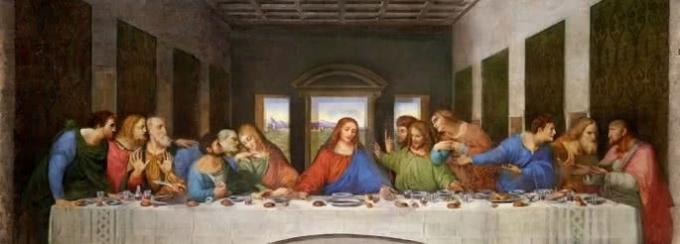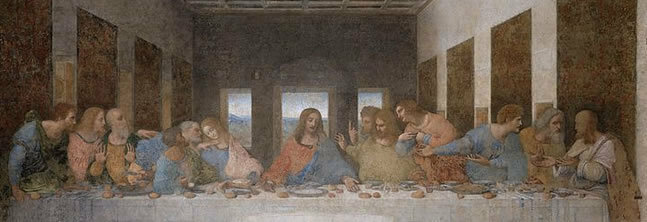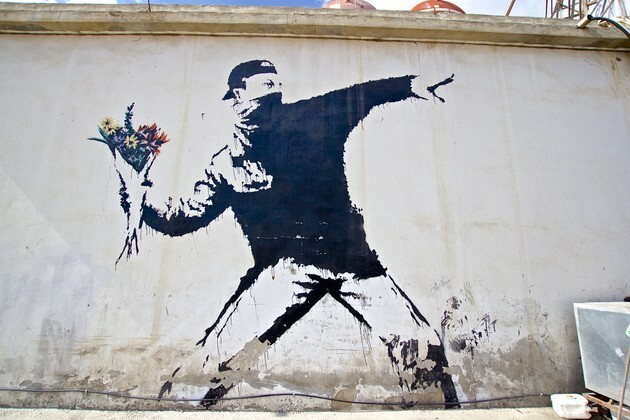The last supper it is one of the most emblematic works of the Renaissance painter Leonardo da Vinci (1452-1519).
In it, the artist portrays the Last Supper of Jesus Christ alongside his apostles, moments before he was crucified.
The fresco is in the Church and Convent of Santa Maria Delle Grazie, in Milan, Italy. Next to Mona Lisa this is one of Leonardo da Vinci's most famous works.

Until today it is one of the most studied by specialists, as it contains several subliminal messages.
History of the Work
The last supper it was produced between the years 1495 and 1498. The work was commissioned by the Duke of Milan, Ludovico Sforza, to adorn the wall of the Church of Santa Maria Delle Grazie.
Da Vinci spent three years of his life dedicated to her, and today it is considered one of the most important works of humanity. He used the techniques associated with fresco and tempering.
In the traditional technique, the paint is placed on a damp wall. Instead, Leonardo decided to innovate, and applied the paint to a dry surface. However, the choice of this new technique resulted in a faster deterioration of the work.

Over time, the work suffered major deterioration, especially due to attacks that took place in World War II. As a result, it was restored several times.
According to the Bible, the work portrays the moment when Jesus reveals his traitor. The passage is from John 13:21:
“Jesus having said this, he was overcome in spirit, and affirmed, saying, Verily, verily, I say unto you, that one of you shall betray me.
So the disciples looked at each other, doubting who he was talking about.
Now one of his disciples, the one whom Jesus loved, was reclining in Jesus' bosom.
Then Simon Peter made a sign to him to ask who was the one he was talking about.
And, leaning on Jesus' breast, he said to him, Lord, who is it?
Jesus replied: He is the one to whom I give the wet bit. And, watering the morsel, he gave it to Judas Iscariot, son of Simon.
And after the bit, Satan entered him. Jesus therefore said, What thou doest, do it quickly.
And none of those who sat at the table understood for what purpose he had said this to him..”
Work Analysis
With great realism, symmetry and perfection, Da Vinci used the vanishing point technique, which brings depth to the work. This technique was very widespread in Rebirth, being one of its main features.
Jesus is in the center of the table and on each side of the figure are six of his apostles, totaling the twelve: Peter, John, James (son of Zebedee), James (son of Alphaeus), Andrew, Matthew, Bartholomew, Simon Zelote, Philip, Thomas, Judas, Thaddeus and Judas Iscariot.
On the large table there are water, wine, orange, bread and fish. However, the Holy Grail, the holy cup of Jesus, does not appear, although it is an important artifact in the scene.
Despite being a picture of the moment when Jesus points out his traitor (Judas Iscariot), in his face we can see a certain serenity.
In relation to the apostles, we can see the opposite, that is, an indignation and disorder. This is noticeable by the gestures and movements of each one of them.
Thus, and through the artist's great mastery, Da Vinci managed to reveal all the emotional and physical reactions of each of the characters.
Curiosities about The last supper
- The mural has dimensions 460 cm x 880 cm and is also called "Santa Ceia".
- In Milan, the work is located in a room dedicated to the meals of monks in the Monastery of the Church of Santa Maria Delle Grazie.
- None of the people portrayed in the work have halos, not even Jesus. This denotes Da Vinci's idea of representing ordinary subjects.
- It can be visited by purchasing a ticket, although it has to be done months in advance, as visitation is very popular.
- Some theories suggest that the scene is Mary Magdalene, on the right side of Jesus Christ, rather than his apostle John. In this representation we can notice several feminine aspects.
- Other theories also present the question of the knife held by Pedro which, for some, is directly threatening Maria. And yet, of a supposed baby being held by Judas Iscariot.
- The book "The Da Vinci Code(2003) by Dan Brown points to several mysteries related to this work. One of them is the supposed union between Mary Magdalene and Jesus Christ, in addition to the son who was born from this relationship. Certainly, the book received a lot of criticism from religious people. In 2006, a film directed by Ron Howard and based on the work of Dan Brown was released.
Read too:
- Life and Work of Leonardo da Vinci
- Mona Lisa
- artistic renaissance



